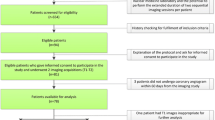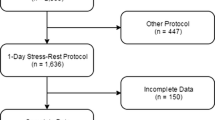Abstract.
There are no large studies available to guide the selection of thallium (Tl), methoxyisobutylisonitrile (MIBI) or tetrofosmin (Tf) for myocardial perfusion imaging. Our objective was to compare the technical and clinical performance of the three in routine clinical practice. We randomised 2,560 patients to receive Tl, MIBI or Tf. A 1-day stress/rest protocol was used for MIBI and Tf. Tracer uptake was scored using a 17-segment model, quality and artefact scores were assigned, and ratios of heart (H), liver (L), subdiaphragmatic (S) and lung activity were measured. Mean quality scores (stress/rest) were Tl 2.13/2.16, MIBI 2.18/2.39, Tf 2.18/2.42 (P=ns stress and <0.00001 rest). For attenuation artefact, Tl>MIBI=Tf (P<0.05) and for low-count artefact Tl>MIBI>Tf (P<0.001). For H/S, Tl>MIBI=Tf, for H/L Tl>MIBI=Tf, and for H/lung Tl<MIBI=Tf. Stress defects in the patients with reversible or mixed perfusion defects were more severe for Tl than for the other tracers (mean summed score out of 68: Tl 52.3, MIBI 55.7, Tf 54.4, P<0.01), but mean rest scores were more similar (Tl 58.7, MIBI 60.7, Tf 59.4, P=0.02). In the subset of 137 patients undergoing diagnostic perfusion studies without prior infarction, angiography or revascularisation, overall sensitivity for the detection of coronary disease defined by subsequent angiography was 91% with a specificity of 87%. There were no significant differences between the tracers with regard to sensitivity and specificity. In conclusion: There are technical differences between the tracers. Overall image quality score is superior using technetium, with less low-count artefact and less attenuation. Stress defect depth and extent are slightly greater using thallium, with no difference between MIBI and tetrofosmin. All three tracers perform well in clinical terms, with high sensitivity and specificity for angiographic stenosis and no differences in accuracy between the tracers.
Similar content being viewed by others
Author information
Authors and Affiliations
Additional information
Electronic Publication
Rights and permissions
About this article
Cite this article
Kapur, A., Latus, K.A., Davies, G. et al. A comparison of three radionuclide myocardial perfusion tracers in clinical practice: the ROBUST study. Eur J Nucl Med 29, 1608–1616 (2002). https://doi.org/10.1007/s00259-002-0998-8
Received:
Accepted:
Issue Date:
DOI: https://doi.org/10.1007/s00259-002-0998-8




